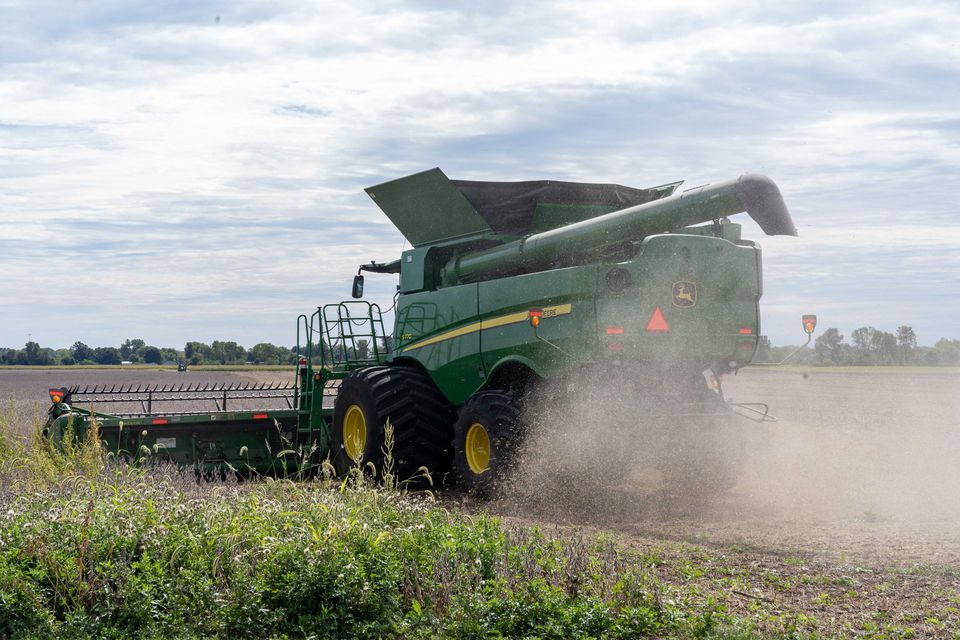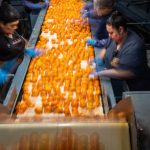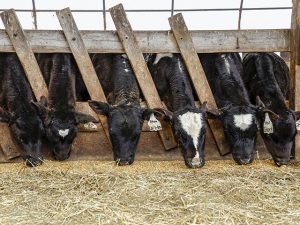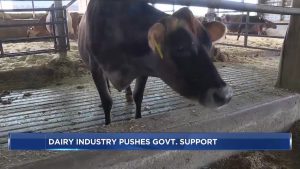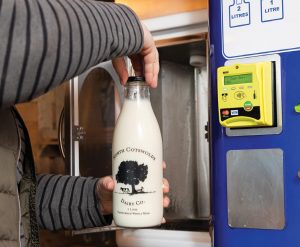
Josh Yoder, a fifth-generation farmer in Ohio, has been watching gyrations in the crop markets as Donald Trump moved to dramatically escalate his trade war with China this week.
Yoder is still an ardent Trump supporter, but he’s also getting nervous about whether the president’s strategy is going to pay off.
“The world is trying to figure out if Trump is playing chess or checkers,” said Yoder, a 39-year-old who voted for the president in the past three elections. “If it’s the former, it would be a cool, long-term benefit. If it’s the latter, we’re going down a path we’ve never gone down in my lifetime.”
Yoder’s words echo a growing sense of apprehension across America’s crop belt, a major Trump voting bloc. Farmers have a deep sense of just how dependent they are on China for a steady clip of demand – a trade flow that’s allowed the US to rank among the world’s top crop exporters.
China is by far the biggest global buyer of soybeans. The commodity is also the highest-value US bulk agriculture export, with sales last year of nearly $25 billion. Roughly half of that revenue was thanks to the Asian nation.
If that trade dramatically shrinks, it would spell disastrous consequences for the agricultural economy that helps power America’s heartland. The ripple effects would spread out not only to farmers, but tractor makers, fertilizer producers and seed sellers.
“It’s going to be a year in general where guys are tightening their belts,” Yoder said.

US President Donald Trump during a cabinet meeting at the White House in Washington this week. Photographer: Shawn Thew/EPA/Bloomberg
On Wednesday, Trump raised duties on China, even as he issued a pause on levies for many other nations. The president has taken aim at China in particular over its trade practices and its combative approach to his tariff plans. China had already pledged to retaliate against the US with a “fight to the end” and then moved to increase its tariffs on all imports from the US, while calling the administration’s actions a “joke.”
Soybean futures in Chicago are down more than 10% from this time a year ago. This week, prices touched $9.695 a bushel, the lowest since December.

Soybean futures in Chicago are down more than 10% from this time a year ago. Photo Getty
Farmers have been here before. During his previous term, Trump unleashed a trade war with China that slowed demand for US soybeans. Domestic inventories of the crop ballooned as a result, more than tripling in just four years.
At the time, Trump was able to soften the blow by offering $28 billion to bail out the farm economy — more than twice the ultimate $12 billion cost of the controversial auto industry bailouts under Presidents George W. Bush and Barack Obama. The move helped buoy US net farm income to a seven-year high in 2020.
Agriculture Secretary Brooke Rollins said the administration is once again considering plans to offer assistance to farmers.
“Obviously everything is on the table, but we’re in such a period of uncertainty in terms of what this looks like,” Rollins told Bloomberg News Wednesday at the White House.
But farmers have an oft-repeated refrain that they want “trade – not aid” to shore up their finances.
“For farm aid, I know most don’t want it if we can avoid it,” said Matt Bennett, an Illinois corn and soy grower and co-founder of farm advisory AgMarket.Net. “But, if we see beans perpetually at $10 or below, we will either need help or we won’t be planting beans. It’s just too hard for the average grower to make money at these prices.”
Yoder, the Ohio farmer, is worried that soy prices could drop to as low as $7 a bushel.
“I would have more trepidation if I didn’t live through this first time,” he said.
In the meantime, Yoder will be taking steps to limit spending on the 1,600 acres where he grows corn and soybeans. He said options include reducing use of farm inputs like fertilizer and herbicide: “The trick to pencil a profit this year is find where you can cut costs without compromising yields.”
Even before the current administration took the reins, farmer income had been under pressure for a couple years as the cost of seeds, fertilizer and equipment went up and crop prices declined. Meanwhile, inbound shipments of everything from avocados to coffee and sugar are expected to drive the country’s agriculture trade deficit to a record $49 billion this year, according to the US Department of Agriculture.
Purdue University and CME Group’s Ag Economy Barometer for March showed slipping sentiment for the future among farmers amid trade-policy uncertainty. The March reading dropped 12 points to 140. And perhaps more telling, a survey question asking about the outlook for US agricultural exports over the next five years showed expectations at an all-time low. (The question has been asked since 2019.)
The US cultivated its trade relationship with China over the course of decades, and the steady flow of soybeans from states like Iowa and Illinois into Asia was heralded as a point of pride.
Iowa was home to frequent contract signings for US-to-China soy shipments for years until 2017, when the onset of Trump’s previous trade war with China killed it off. The ceremonies finally resumed six years later in 2023. In the intervening period, Brazil swooped in to establish much stronger ties with China.
Until Trump’s first term, Brazil and the US had been in a heated competition for the title of world’s biggest soybean shipper. But since then, the South American country has far outpaced the US, buoyed by increased spending on logistical infrastructure and bountiful harvests.
This week, Chinese soybean crushers scooped up an unusually large amount of Brazilian beans, purchasing at least 40 cargoes from the South American nation in the first half of this week, Bloomberg News reported.
The current dispute could further boost Brazil’s share of Chinese soybean imports, according to ANEC, a Sao Paulo-based group representing major oilseed traders such as Archer-Daniels-Midland Co. and Bunge Global SA.
Prices for soybeans delivered to one of Brazil’s top ports jumped more than 50% in just two days last week. Farmers in the country took advantage and closed more deals, with sales in the week of Trump’s tariff-signing event 1.2 million metric tons higher than the prior period, said Jose Fabiano da Silva, cash-market director at brokerage firm Agrinvest.
With Brazil expected to harvest a record soy crop this year, there’s a chance the country could keep shipping to China for longer than usual, replacing cargoes Asian buyers would otherwise get from the US in the second half of the year, said Cristiano Palavro, a partner at consultancy Patria Agronegocios.
For its part, China had loaded up on soybeans from the US in the weeks ahead of tariffs becoming official, though most of that buying was done by the state stockpiler Sinograin. Commercial end users have been largely avoiding American supplies because of the expected trade spat, and they expect they can meet most of their needs from Brazil and other alternative suppliers.
Currently, China has only about 400,000 tons of US soybeans on the books after bringing in nearly 22 million tons earlier in the season, according to USDA data. The rest of its annual needs of 109 million tons will be fulfilled elsewhere, and no soy has been purchased from the US for the next year.
One bit of positive news for US farmers is that at least for now, Mexico is being spared from the latest round of tariffs, which should help keep US corn flowing to its biggest export destination.
Still, it’s a small comfort when the industry is facing so much uncertainty over trade. Even before the latest tariff news, growers were already planning to make some shifts away from soybeans and into corn. Returns for each crop are in the red, according to the University of Illinois’ closely watched budgets.
“The worst thing our farmers run into is that we can’t plan for anything,” said Andy Riffe, manager at Stratford Grain Co. in northern Texas.
You can now read the most important #news on #eDairyNews #Whatsapp channels!!!
🇺🇸 eDairy News INGLÊS: https://whatsapp.com/channel/0029VaKsjzGDTkJyIN6hcP1K
